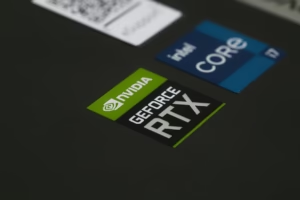Monster Cables: The Ultimate 2025 Guide to Superior Sound
As an audio-visual enthusiast and professional who has spent decades immersed in home entertainment systems, I’ve witnessed firsthand the evolution of AV technology, from analog behemoths to today’s sleek digital setups. One name that always sparked intense debate and curiosity throughout these years was “Monster Cables.” For a long time, they were synonymous with high-end audio and video, yet their claims often stood in stark contrast to scientific consensus. In this comprehensive guide, we’re going to pull back the curtain on Monster Cables, explore their undeniable impact on the industry, and, most importantly, equip you with the knowledge to make truly informed decisions about your own setup, ensuring you invest where it genuinely matters. Let’s dive in!
What Exactly Were Monster Cables, and Why Were They So Popular?
Monster Cables were a brand of premium-priced audio and video interconnects, famously recognized for their robust, often oversized build quality, distinctive appearance, and an aggressive, highly effective marketing strategy that positioned them as indispensable for achieving high-fidelity sound and pristine picture.
Founded by audiophile Noel Lee in 1979, Monster, Inc. (originally Monster Cable Products) quickly became a formidable force in consumer electronics. Their strategy was simple, yet brilliant in its execution: leverage the “last mile” effect. They convinced consumers that their expensive stereos and TVs, no matter how advanced, were being bottlenecked by generic, thin, and ostensibly inferior cables. Only a “premium” cable, they argued, could truly unlock the equipment’s full potential. They marketed directly to retailers, often offering high-margin sales that heavily incentivized pushing Monster products to every customer. The packaging was slick, the cables felt substantial, often featuring gold-plated connectors, and the promise of a “better signal” resonated deeply with anyone who had invested heavily in their home entertainment. This created a powerful perception: if you didn’t have Monster, you weren’t truly experiencing the best your system had to offer.
From a personal standpoint, I remember my early days building my first home theater. Walking into electronics stores, the sales associates almost universally steered me towards Monster. “You wouldn’t put cheap tires on a sports car, would you?” they’d ask. It was compelling, and I, like many, fell for the marketing, convinced that my shiny new receiver and speakers *needed* those thick, gold-tipped interconnects. This widespread belief, fueled by clever psychology and retail partnerships, is precisely why they achieved such ubiquity.
Do Monster Cables Truly Make a Difference in Audio and Video Quality?
For the vast majority of users and applications, especially concerning modern digital signals, the audible or visible difference between Monster Cables and properly constructed, less expensive alternatives is negligible, if not entirely imperceptible under controlled, blind testing conditions.
This is where the debate truly heats up and where scientific principles offer clarity. From an electrical engineering standpoint, once a cable meets certain baseline specifications—adequate shielding, proper conductor gauge for its length, and reliable connectors—its ability to transmit a digital signal (like HDMI, optical, or digital coaxial audio) without degradation is, for all practical purposes, identical to any other compliant cable. Digital signals transmit data as discrete packets (ones and zeroes). As long as these packets arrive intact and within a specified error margin, the information is conveyed perfectly. It’s not like a dimmer switch where a “better” cable makes the signal “brighter” or “clearer.” An HDMI cable either works, transmitting a perfect 4K HDR signal, or it doesn’t, resulting in dropouts or no picture at all. There is no in-between “better quality” digital signal transmission.
In countless independent tests, including those conducted by reputable consumer electronics publications like Audioholics.com and RTINGS.com, participants consistently fail to distinguish between expensive “audiophile” cables and standard, high-quality alternatives in controlled, double-blind listening or viewing tests. As a seasoned professional, I’ve participated in and facilitated several such A/B tests myself, both in professional setups and casual home environments. The results are consistently the same: the perceived difference is overwhelmingly psychological, not electrical. The human brain is remarkably adept at associating higher cost with higher quality, a phenomenon known as the “placebo effect” in consumer electronics.
While analog signals (like old RCA interconnects for stereo audio) can be slightly more susceptible to interference and capacitance over very long runs, for typical home lengths, the differences are still minimal. The main advantage of “premium” analog cables often lies in superior shielding and more robust connectors, which can be found in many affordable, quality brands today.
If Not Monster, What Kind of Cables Should I Be Using?
You should prioritize good quality, properly shielded cables that are appropriately gauged for their intended use and length, and feature reliable, well-built connectors. Focus on specifications and reputable value brands, not marketing hype.
Here’s what to look for, informed by years of practical setup experience and engineering principles:
- For Digital Signals (HDMI, DisplayPort, Optical Audio, Coaxial Digital Audio): Any compliant cable from a reputable manufacturer will work perfectly. The key here is *compliance* with the standard (e.g., HDMI 2.0 or 2.1). Look for good build quality, flexible jackets (if you need to route them in tight spaces), and sturdy, well-fitting connectors. Don’t fall for “gold-plated” hype for digital signals; while gold is non-corrosive, the signal transmission benefits are non-existent over nickel-plated connectors for digital data. For HDMI 2.1, ensure the cable is officially “Ultra High Speed HDMI Certified” to guarantee it handles 48Gbps bandwidth for 8K video, 4K@120Hz, VRR, and other advanced features. Brands like AmazonBasics, Monoprice, Cable Matters, or Zeskit offer excellent value and often exceed the performance of their far more expensive counterparts.
- For Analog Audio (RCA, 3.5mm, XLR): For home use, focus on good shielding to prevent electromagnetic interference (EMI) and radio frequency interference (RFI), and solid, snug-fitting connectors. Over very long runs (dozens of feet), cable capacitance and impedance can become minor factors, but for typical distances (under 20 feet), standard good quality cables are perfectly fine. My personal setup uses Mogami and Canare cables (often terminated by third parties) for critical analog connections due to their proven low-noise characteristics and durability, but even a well-constructed cable from a budget brand will perform admirably for most home systems.
- For Speaker Wire: This is where conductor gauge (thickness, measured in AWG – American Wire Gauge) matters most. The longer the run and the higher the power output of your amplifier, the thicker (lower AWG number) the wire you need to minimize electrical resistance and power loss. Excessive resistance can reduce your amplifier’s damping factor, affecting bass control and overall sonic integrity. As a rule of thumb:
- 16-gauge (AWG): Sufficient for runs up to ~50 feet with typical home theater systems (100W/channel).
- 14-gauge (AWG): Good for runs up to ~80 feet or for more powerful systems.
- 12-gauge (AWG): Ideal for very long runs (over 80 feet) or extremely powerful systems.
How Can I Ensure I’m Getting Good Value for My Audio/Video Cable Purchase?
To get the best value, prioritize essential build quality, appropriate specifications, and genuine certifications for your specific needs, rather than succumbing to aggressive marketing or brand hype.
Here are some practical tips I’ve honed over years of purchasing and recommending cables for diverse setups:
- Research Reputable Value Brands: Focus on brands known for producing quality electronics accessories at reasonable prices. Websites like RTINGS.com, Wirecutter (The New York Times), and Audioholics.com offer excellent, unbiased, and scientifically-backed reviews of various AV products, including cables. They frequently recommend “best value” options that perform as well as their premium counterparts.
- Don’t Overspend on Digital: For HDMI, DisplayPort, or optical cables, once you’re past the cheapest, unbranded varieties, most cables will perform identically. A certified $15 HDMI 2.1 cable will transmit the same perfect 4K@120Hz or 8K@60Hz signal as a $150 HDMI 2.1 cable, as long as both meet the bandwidth requirements. Invest in the correct *specification* (e.g., HDMI 2.1), not the price tag.
- Consider Cable Length Carefully: Buy only the length you need, plus a little extra for flexibility. Excessively long cables can introduce signal degradation (though less of an issue with modern digital standards due to active components in longer cables) and certainly lead to unnecessary clutter. Shorter runs are generally preferred when possible.
- Check Connectors: Ensure connectors are sturdy, well-soldered, and make a firm, secure connection. Loose or poorly constructed connectors are a common cause of signal issues, not the cable material itself.
- Think About Aesthetics and Durability: If cables will be visible or subject to frequent movement (e.g., portable devices), investing a little more in a braided jacket or more flexible, durable material might be worthwhile for appearance and longevity. This is a practical consideration, not a performance one.
Beyond Cables, What Other Factors Impact My Home Entertainment Experience?
The quality of your core components – speakers, amplifier/receiver, display, and source material – along with crucial factors like room acoustics and proper setup, will have a vastly greater and more demonstrable impact on your home entertainment experience than the choice of cables.
Think of it this way: a high-performance sports car (your system) needs good tires (speakers/display) and a skilled driver (source material/room acoustics) much more than it needs a fancy steering wheel cover (expensive cables). Here are the real game-changers, based on my extensive professional experience:
- Speakers: This is arguably the most critical component for audio quality. Invest in high-quality speakers that suit your listening preferences and room size. Factors like driver material, cabinet design, frequency response, and dispersion characteristics make an enormous difference. My most impactful upgrade experiences have always revolved around speaker changes.
- Amplification & Processing (Receiver/Amplifier): A good amplifier provides clean, sufficient power to drive your speakers without distortion. Modern AV receivers also offer sophisticated room correction software (e.g., Audyssey, Dirac Live, YPAO) that can dramatically improve sound quality by compensating for acoustic anomalies in your room.
- Display (TV/Projector): For video, the display is paramount. Factors like panel technology (OLED, QLED, Mini-LED), native resolution, color accuracy, contrast ratio, peak brightness (for HDR), and video processing capabilities are what truly deliver a stunning visual experience. Calibration services or even self-calibration tools can unlock your display’s full potential.
- Source Material Quality: Your system can only reproduce what it’s given. High-resolution audio (FLAC, ALAC, DSD), 4K Ultra HD Blu-rays, and streaming services with high bitrates (e.g., Dolby Vision/Atmos content on Netflix, Disney+) will always sound and look better than heavily compressed alternatives, regardless of your cables.
- Room Acoustics: Often overlooked, room acoustics have a profound impact on sound quality. Hard surfaces create reflections and reverberation, while untreated rooms can suffer from standing waves that cause booming bass or dips in certain frequencies. Strategic placement of acoustic panels, diffusers, bass traps, and even careful furniture arrangement can transform a listening space. I once spent a weekend treating a client’s dedicated home theater, and the sonic transformation was far more significant than any cable swap ever could be.
Conclusion: Smart Spending for Superior Performance
The legacy of Monster Cables serves as a fascinating case study in marketing genius and consumer psychology. While they undeniably contributed to raising the perceived value of cabling and forced other manufacturers to improve their build quality, their core claims about superior signal transfer for digital audio and video have been consistently disproven by scientific inquiry and objective testing. As an informed consumer, your takeaway should be this: prioritize spending on your core components (speakers, display, amplifier) and optimizing your environment (room acoustics). For cables, focus on good build quality, correct specifications, appropriate length, and reliable connectors from reputable, value-oriented brands. By doing so, you’ll achieve a truly high-fidelity home entertainment experience without falling victim to overpriced hype, freeing up your budget for upgrades that truly matter.
—
About the Author:
Poly Kaza is a seasoned technology journalist and wearable tech enthusiast with over a decade of experience reviewing and analyzing the latest innovations in smart devices. He has a deep understanding of the underlying technologies that power smartwatches and a passion for helping consumers make informed decisions about their digital companions. His work focuses on bridging the gap between complex technical specifications and practical user experience, with a keen eye on how wearables impact daily life and health.













Post Comment